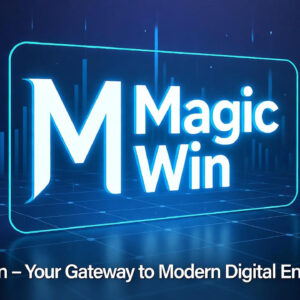Standing out from the crowd is harder than it ever was in the noisy digital age we live in. Often over-saturated, conventional forms of marketing—including paid advertisements, social media campaigns, and email newsletters—make consumers feel swamped rather than involved. Companies must rethink their marketing plans if they want to really engage their audience and establish a meaningful link.
Audio storytelling is one approach that has shown increasingly successful. Using the power of sound, you can create stories that deeply connect with your audience. Audio has the special capacity to promote intimacy, stir up emotions, and leave long impressions whether through podcasts, radio commercials, or even branded audio material such Spotify playlists.
This post explores how your brand can stand out through audio storytelling and promotion, offering actionable strategies and insights to get you started with the help of a Podcast Marketing Agency.
1. Understanding the Power of Audio Storytelling
Before diving into how to leverage audio for your brand, it’s important to understand why audio storytelling is so effective in the first place.
The Psychology of Audio
Unlike text or visuals, audio can engage multiple senses and evoke emotions more directly. Our brains are wired to respond to sound in ways that create a deep emotional connection. For instance:
- Voice tone and delivery can convey empathy, excitement, or trustworthiness.
- Music and sound effects can set the tone, creating suspense, joy, or nostalgia.
- The rhythm and pace of speech can impact how an audience feels about a brand’s message.
According to studies, 75% of people are more likely to remember information they hear rather than what they read. When combined with a compelling story, audio has the ability to leave a long-lasting impact on listeners. Brands that use audio storytelling well can create a more intimate, personal experience that appeals directly to emotions, and emotional engagement is key to building long-term brand loyalty.
2. Crafting an Engaging Brand Story in Audio Form
Now that you know the power of audio storytelling, how can you apply it to your brand? It all starts with crafting a compelling narrative that resonates with your audience.
Know Your Audience
Before you even begin creating your audio content, it’s crucial to understand who your audience is. What are their pain points? What values do they hold dear? What type of content do they listen to?
If you’re marketing to young professionals, you might focus on topics like career development, productivity, or work-life balance. For a more lifestyle-focused audience, you might create stories around personal growth, fashion, or wellness. Understanding your audience’s preferences will help you tailor your message and ensure it resonates with them.
Create a Story Arc
Every good story needs a clear structure. The best audio storytelling follows a beginning, middle, and end, even in short-form content. Here’s how you can break it down:
- Beginning: Start with an engaging hook—something that grabs attention right away. This could be a surprising fact, a question, or a relatable scenario that your audience can connect with.
- Middle: Introduce the problem or challenge that your audience faces. Then, build suspense or anticipation by describing how your brand can offer a solution.
- End: Conclude with a resolution that ties everything together. This is where you present the impact your brand has had, or the transformation that your audience can expect by using your products or services.
It’s important to weave your brand message seamlessly into the narrative rather than delivering it in a hard-sell manner. Your goal should be to keep the audience engaged and allow them to discover how your brand can help solve their problems in a natural, compelling way.
Add Personality to Your Voice
One of the most unique aspects of audio storytelling is the ability to convey personality through the sound of your voice. Whether you’re using a professional narrator, brand ambassador, or customer testimonials, the tone, cadence, and style of speaking can influence how your message is received.
If your brand is playful and energetic, choose a lively, upbeat voice that reflects that tone. If your brand is more sophisticated and serious, opt for a calm, authoritative voice that commands respect.
By using a voice that aligns with your brand’s personality, you make your content feel more authentic and relatable, creating a stronger connection with your audience.
3. Distribute Your Audio Content Strategically
Once you’ve created a great piece of audio content, the next step is to get it out into the world. Effective distribution is key to ensuring your message reaches the right ears.
Launch a Podcast
Podcasting is one of the most powerful ways to tell your brand story over time. By launching a branded podcast, you can create a regular series that helps build a community around your brand. Podcasts are highly consumable and allow your audience to engage with your content on the go—whether they’re driving, working out, or commuting.
To get started, consider these tips for creating a successful podcast:
- Choose your theme carefully. Make sure your podcast is focused on a topic that is both relevant to your audience and tied to your brand values.
- Invite guest experts or influencers. Having credible guests on your podcast can help amplify your reach and add authority to your content.
- Incorporate your brand subtly. Instead of overtly advertising, weave your brand’s messaging naturally into the conversations and storytelling.
Use Audio Ads to Promote Your Brand
If you’re not ready to launch a full podcast, audio ads on popular platforms like Spotify, Apple Podcasts, or even traditional radio can be an effective way to reach your target audience. The key to success here is creating ads that don’t feel like traditional commercials.
Consider crafting a short, engaging story that introduces your brand in a way that feels natural. Focus on telling a compelling, problem-solving narrative rather than just listing features or benefits. Make sure the message is memorable by using a distinctive voice and sound design that matches your brand personality.
Leverage Social Media and Email
Once your podcast or audio content is ready, don’t forget to promote it across social media and email channels. Snippets from your podcast can serve as teasers on platforms like Instagram, Twitter, and LinkedIn, driving traffic to your full episode. You can also use email marketing to deliver your audio content directly to your subscribers.
4. Optimize Your Audio Content for Discovery
If you want your audio content to be discovered, you’ll need to make it easily searchable. This requires a combination of SEO strategies for audio and promotion on relevant platforms.
Use Transcripts for Searchability
Search engines can’t “listen” to audio, but they can index transcripts of your podcasts or audio content. By providing a detailed transcript alongside your audio, you can improve discoverability and increase the chances that your content will show up in search results.
Submit to Multiple Platforms
To maximize your reach, submit your podcast or audio content to multiple directories. The more platforms your content appears on, the more likely people are to stumble upon it. Popular podcast directories include:
- Apple Podcasts
- Spotify
- Google Podcasts
- Stitcher
- TuneIn
Don’t forget to also list your content on your website, so your audience can easily access it from any device.
5. Measure and Refine Your Strategy
As with any marketing effort, it’s essential to track the success of your audio storytelling campaigns. Analytics tools can help you monitor:
- Listener engagement (how long people listen, drop-off rates, etc.)
- Conversions (how many people take action after listening)
- Audience growth (how your subscriber base or listenership grows over time)
By analyzing this data, you can refine your strategy to better serve your audience and improve your storytelling efforts.
Conclusion
Audio storytelling isn’t just a passing trend it’s a powerful tool that can help your brand build deeper, more meaningful connections with your audience. As people increasingly consume content on the go, leveraging audio to share your brand’s story can set you apart from competitors.
By creating compelling narratives, distributing your content strategically, and optimizing it for discovery, you’ll be able to amplify your brand’s message, reach a broader audience, and ultimately drive stronger brand loyalty. The future of marketing is audio, and it’s time to turn up the volume on your brand’s story.




